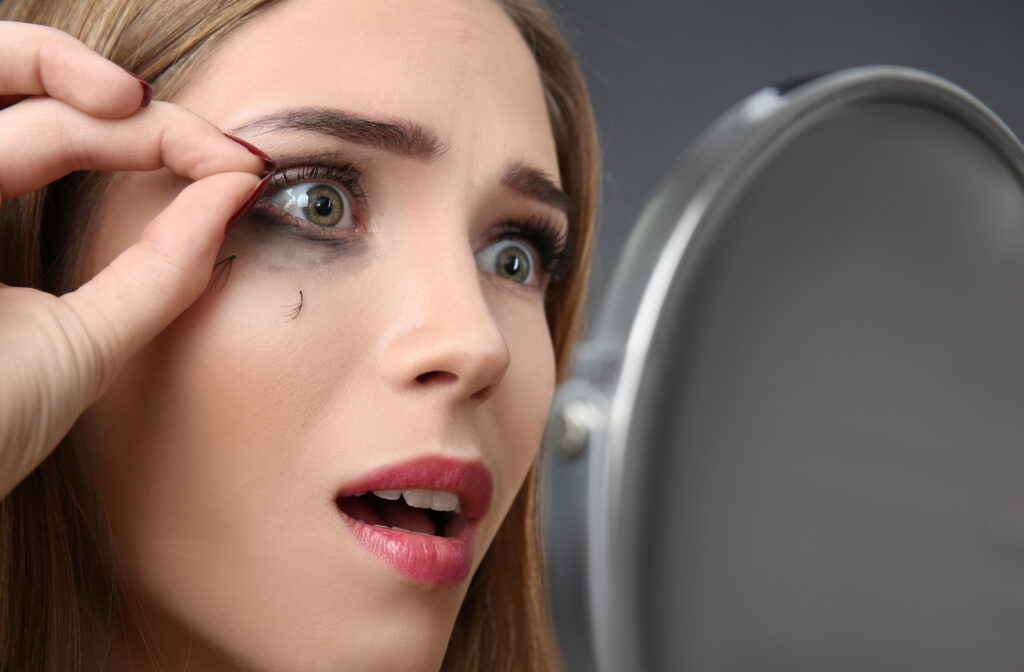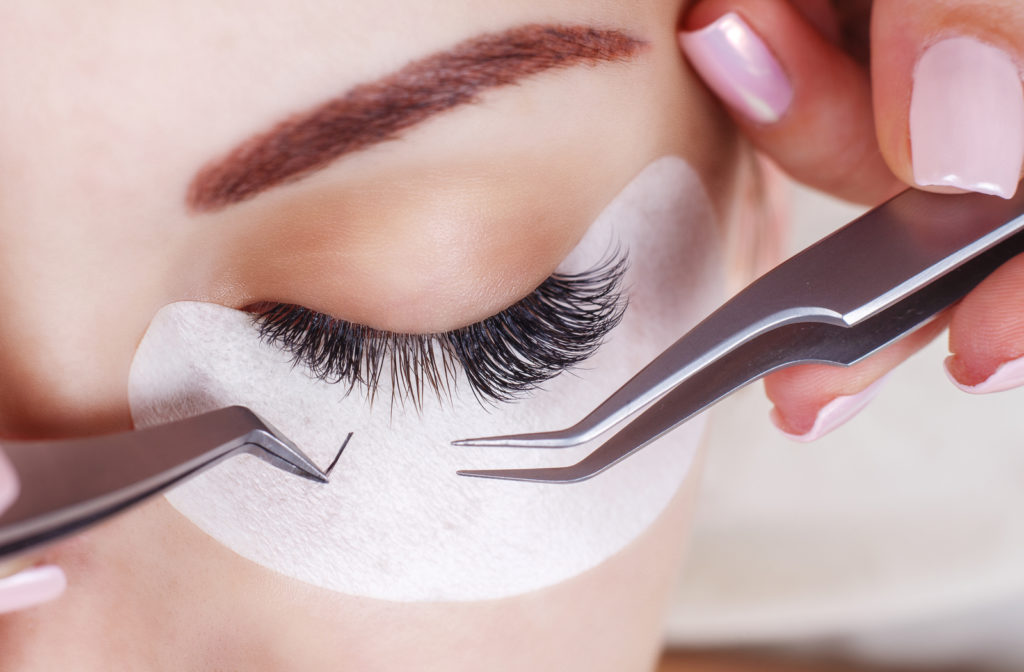Many people search for ways to enhance their lash line, with false lashes or eyelash extensions being popular choices. If you’re interested in eyelash extensions or false lashes, you should know about their associated risks. While longer and fuller lashes can look great, you may end up needing to visit your optometrist for an evaluation if complications arise.
Can lash extensions and false lashes harm your eyes? Continue reading to learn more about them, including their risks and how you can care for your false lashes.
Are Lash Extensions & False Lashes Bad for Your Eyes?
Many people use lash extensions or false lashes to achieve a longer and fuller look. They’re a semipermanent way to improve your appearance without needing mascara. You’ve likely seen celebrities, people on social media, or your friends using these products.
While the results can look great, are you putting your eye health at risk?
Eyelash extensions and false lashes aren’t without risks to consider. Incorrectly applying lashes or using the wrong adhesive can lead to discomfort, infection, or permanent lash loss. They require diligent care to avoid potential damage to your eyes.
Some of the common risks associated with these lash options are:
- Allergic reactions
- Infections
- Loss of natural eyelashes
- Eyelid & ocular surface inflammation
Allergic Reactions
The glue used to bond false lashes to your natural lash line can cause an allergic reaction. You’ll typically experience this irritation within the first 48 hours of application. Some common symptoms in the eyelids and eyes include:
- Tearing
- Irritation
- Redness
- Itchiness
- Swelling
- Watery eyes
These symptoms aren’t likely to resolve on their own. You may need to have your aesthetician remove your false lashes or extensions if you experience an allergic reaction. Your optometrist is always available to examine your eyes and determine the cause of your symptoms.
Infections
Infections are a possibility after your lash appointment finishes. Besides several irritating symptoms, infections can increase your risk of a vision-threatening corneal ulcer. You may have an infection if you experience:
- Redness
- Swelling
- Pain or discomfort
- Itching
- Discharge
- Watery eyes
- Blurry vision
Infections typically occur when your aesthetician has poor hygiene protocols. You can prevent potential complications by visiting a certified technician who disinfects their tools and follows good hygiene practices. Experiencing an infection means visiting your optometrist, who can recommend an effective treatment plan to clear your symptoms.

Loss of Natural Eyelashes
Lash extensions and false lashes attach to your natural eyelashes to create a thicker and longer appearance. However, there is the risk of losing your natural eyelashes. Extensions can damage or rip your natural lashes out.
False lashes weigh down on your natural lash line. Too much weight can cause traction alopecia, causing the natural eyelashes to prematurely fall out due to damage to the hair follicles. Your risk increases the longer and fuller false lashes you get.
Remember to treat your lashes with care. Don’t rub your eyes or pull at your false lashes.
Eyelid & Ocular Surface Inflammation
Another risk associated with false eyelashes and lash extensions is the inflammation of your eyelids and ocular surface. Longer lashes can increase the amount of airflow to your eye’s surface, drying your eyes out and leading to irritation.
Some people may assume that your false lashes don’t require any care, but this is false! Extensions can trap debris and bacteria near the lash line. If you don’t clean your extensions, it can lead to the development of blepharitis.
Blepharitis is the inflammation of the eyelids, leading to many uncomfortable symptoms. These symptoms include:
- Watery eyes
- Red eyes
- Eyes that burn, sting, or feel gritty
- Eyelids that appear greasy
- Red, swollen eyelids
- Flakey skin
- Crusted eyelashes
- More frequent blinking
- Light sensitivity
- Blurry vision
If blepharitis is left untreated, it can increase your risk of developing styes, infections, and dry eyes.
While false eyelashes and lash extensions have risks, you don’t need to avoid receiving them. With proper caution and care, you can enjoy fuller eyelashes.
Tips for Protecting Your Eye Health
You can take several precautions to reduce the risk of complications with false eyelashes and extensions. Consider following these guidelines to protect your eye health:
- Have a certified professional attach your extensions in a clean environment
- Ask about the ingredients of the adhesive used—formaldehyde can cause allergic reactions & irritation
- Ensure your technician washes their hands, sterilizes equipment, & provides clean towels during your appointment
- Ask for a patch test on your skin if you have sensitive skin or allergies—you can prevent a potential allergic reaction
Your Optometrist is Here to Help
If you have eyelash extensions or want false lashes, you can prevent complications with proper care. You may still experience issues, but your optometrist can help manage these problems. Don’t hesitate to contact them if you’re experiencing discomfort. Reach out to your eye doctor if you’re experiencing eye discomfort or another eye-related issue.




